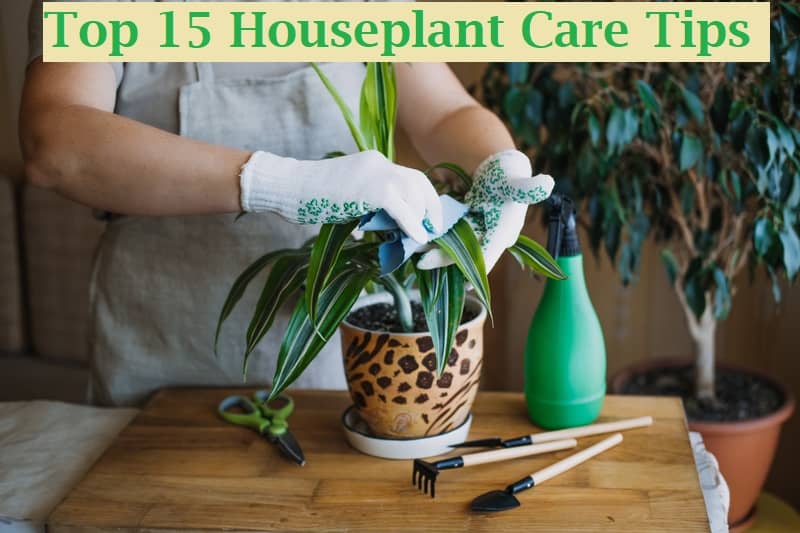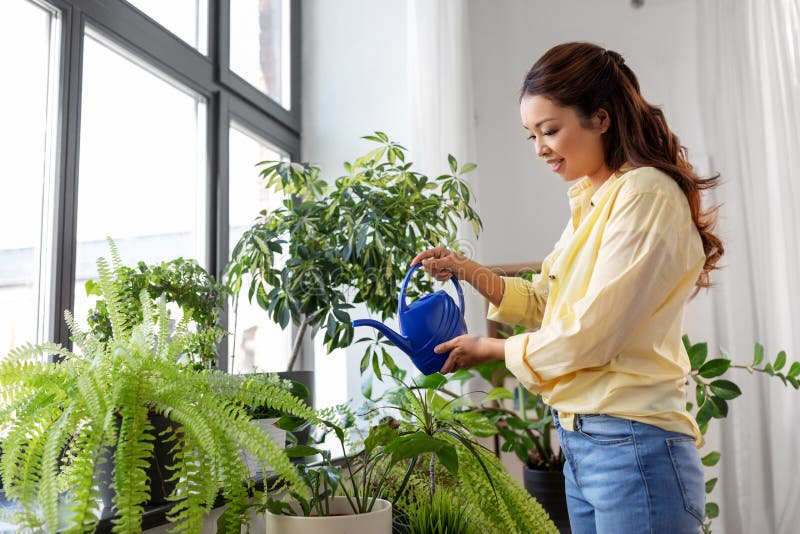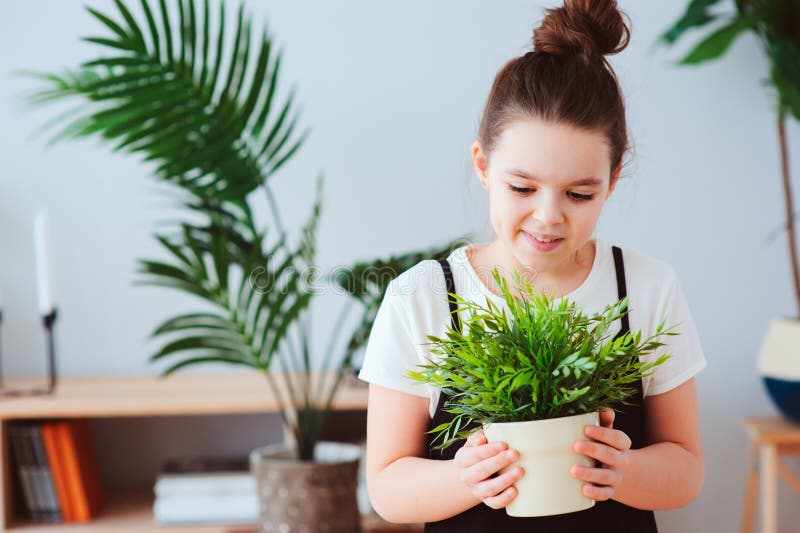HousePlantJoy is supported by our audience. When you purchase through one of our links, we may earn a small affiliate commission. As an Amazon Associate I earn from qualifying purchases. Your cost is not affected.
==================
Top 15 Houseplant Care Tips
Houseplants add beauty and freshness to our homes. We need to keep them healthy and happy, too. Here are houseplant care tips to help with that endeavor. Moreover, after reading through these Top 15 Houseplant Care Tips, leave us a comment below.
Let’s Start With Our Top 10 Houseplant Tips
- Rotate your plants around so they grow evenly rather than lopsided. Yes, every week. You see, plants naturally grow toward the light. By rotating them, you allow each side to experience this growth, keeping them evenly balanced.
- Don’t fertilize in the winter. Almost all plants need fertilizer only in the spring and summer. That’s when they grow. During the winter months, they rest. However, they still need watering, though not as much as during their growing season.
- Use pots with drainage holes in them. Seemingly minor, but these drainage holes provide the necessary help, especially if you are a gardening newbie. In fact, even experienced plant keepers sometimes use too much water. Use pots with drainage holes and you increase your chances for success!
- Consider taking your houseplants outside for the summer and grow them in the shade or partial shade. I am amazed at the growth when my plants take their summer vacation outdoors!
- If you sometimes over water, invest in a moisture meter. It helps you learn how much water your plant needs. And, if you need someone to plant sit for you while you are away, the moisture meter helps them, too.
More Houseplant Care Tips
- Speaking of watering, saucers are great for catching excess water. I use them for each table or floor plant. However, water sitting in the saucer all the time might keep the roots too soggy. And honestly, it becomes stale, too, and can draw bugs and fungus. One remedy that helps is to take your plant to the sink or bathtub and water them quite well. Then, allow the water to drain for a bit before returning it to the saucer. It also helps keep your surfaces drip-free. Yes, sometimes those water drips cause stains on your furniture, too.
- If needed, use a systemic insecticide. Sprinkle it on the surface of the soil. The insecticide gets absorbed into the plant, helping keep bugs away. It really does work! And, as plant owners know, an ounce of prevention sure beats trying to save your favorite plants when they become infested.
- Keep your plants neat and tidy. Cut the browned bits off your leaves whenever they appear. Follow the natural leaf shape, if the leaf shape comes to a point, don’t cut it back straight across. It just won’t look natural. And that defeats what you are trying to do. Also, keeping those browned bits off allows for better growth and helps keep bugs and fungus from setting in.
- Some people remove dust from the leaves using a damp cloth and wipe each leaf. This grows tedious, especially if you have more than a dozen or so leaves. My solution is simpler. I take mine to the shower when they need dusting. Just let the overhead water wet all the leaves down. It does clean off the dust. In fact, I think it works better than the damp cloth. When done, leave to dry before taking back to their regular spot. In summer, the task is even easier. Just take them outside and use the sprinkler on your garden hose.
- Sometimes a plant becomes too sick to revive. It happens. However, often you can pinch of the ends or tips (we call that propagating) to make a new plant. This works well with many plants, including a fan favorite, the Spider plant. The main plant puts new starts off of a hanging stem, and each “baby” can make a new plant. If you cannot save the parent plant, you might be able to save a few babies to reclaim.
Read on for the final 5 of our houseplant care tips
- Choose Plants for the Space you have. Consider the available light. Which way do your windows face where you want to place the plants? Most houseplants prefer bright, indirect sunlight. Some do well with less light. You might consider filtering the light with a curtain or moving the plant back somewhat. Match the plant with the available light for the best success.
- Sometimes less is more. In fact, with watering plants, this is quite true. Too much water often leads to root rot, fungus, and disease. The environment factors into how much water your plant absorbs and needs. Forget the watering schedule. Instead, check the soil to make sure it’s dry at least 2 inches below the surface. If it is, give it a good drink. However, if it still seems moist and the soil looks dark, forgo watering for now. Additionally, use warm water when you do water. It absorbs better than cold. Pour it on the soil at the base of the plant unless you have air plants that need their leaves watered.
- Monitor the humidity levels. Tropical plants need higher humidity. Succulents and cacti prefer drier air.
- Avoid extreme changes in your home’s environment. Such startling changes cause stress to your plants. Also, keep them away from air vents, air conditioning units, and radiators. Hot or cold drafts cause stress to your plants and might even destroy them.
- Repot when needed. If you plant outgrows its current home, select a planter that is about 1 to 3 inches larger than the one it currently resides in. Too large a container often leads to overwatering. In fact, people that transplant into too large a container often blame the repotting itself when the plant fails to thrive in its new home. Quite often, the problem is the size of the container, rather than the transplanting itself. Also, make sure you use fresh potting mix. It is possible to reuse some mixes (see our article on reusing potting mixes.
With these houseplant care tips
I think these 15 should help you keep your green friends healthy and happy. And, they then provide you with many years of enjoyment. You might find the following articles helpful, too!
Read More:






